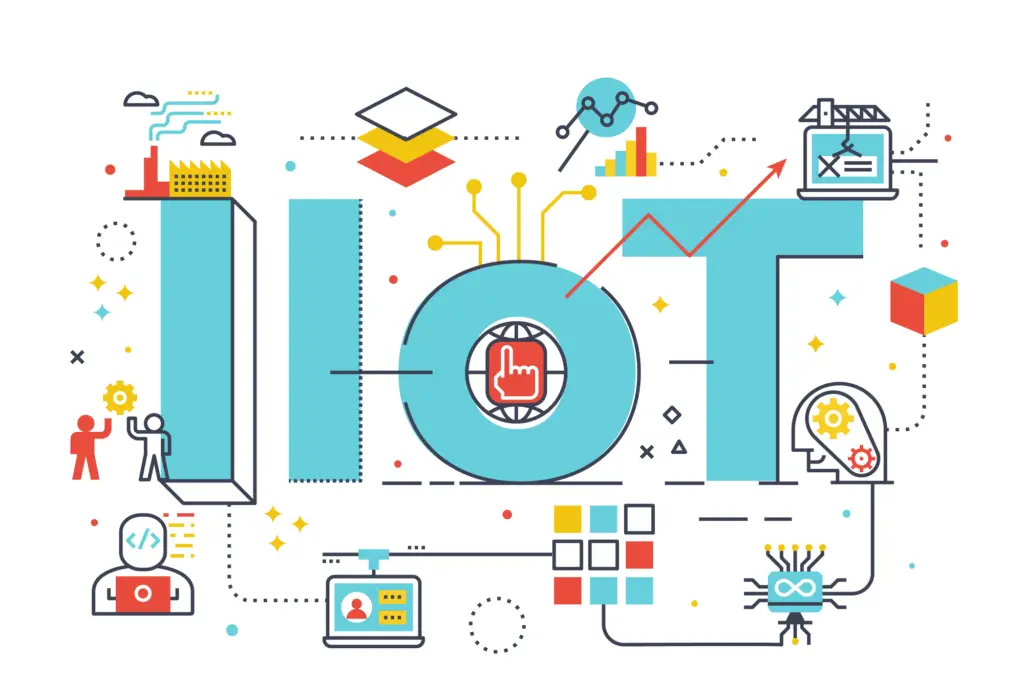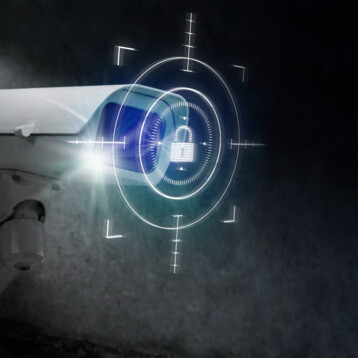The IoT has become one of the technology trends with rapid growth in recent times. IoT Analytics has predicted that by 2025, the world will have well over 27 billion devices connected together!
But while this comes with lots of advantages to the regular internet user and business owner leveraging the digital space, it also comes with increased security concerns such as cyberattacks and software vulnerabilities.
These security issues impact people in healthcare, logistics, finance, retail, manufacturing, and other industries adopting IoT systems.

What are IoT and IoT Security?
IoT is an acronym for the Internet of Things, and it simply indicates a network of smart devices that are connected to share data online without human intervention. IoT architecture often comprises cloud databases for communication, wireless networks, data processing programs, sensors, and smart devices that communicate closely together.
Some key components that aid data processing and exchange among IoT devices include:
- IoT hubs, gateways, and other edge devices move and direct data between the cloud and IoT devices.
- Smart devices that pull data, store it and share data related to the environment and other components and devices.
- On-premises and Cloud data centers have remote servers that transfer data from different ends using wireless connections.
- Embedded systems used by smart devices can include communication hardware, sensors, and processors, focusing on curating data, transferring it, and acting on curated data.
IoT technologies are not restricted to a specific industry. They can be used within a wide array of industries, including healthcare, energy, agriculture, logistics, and several others. Smart devices also differ, depending on the specific IoT system’s goal. They could range from DNA analysis to simple sensor hardware. However, some of the most popular ones are:
- Healthcare systems. Medical IoT(MIT) makes opportunities available for patients to be monitored by healthcare professionals and even the patients themselves. Some IoT smart devices are wirelessly connected fitness bands, glucometers, and blood pressure and heart rate monitoring cuffs.
- Home automation systems control and monitor home features and attributes such as appliances, lighting, alarm, and entertainment systems. Common home automation smart devices are light bulbs, assistant speakers, refrigerators, thermostats, and plugs.
- Smart warehouses use interconnected and automated technologies to enhance organizations’ efficiency and productivity. Some everyday things in a smart warehouse include drones, radio frequency identification (RFID) scanners, robots, complex warehouse management software, and artificial intelligence-driven programs.
- Wearables commonly deployed by healthcare and sports. This includes blood pressure monitors, smart watches, electrocardiograms, and fitness trackers.
- Smart cities. It uses curated data from smart devices to enhance public utilities, infrastructure, and services. Some examples of these devices include lights, connected sensors, waste bins, air quality monitoring systems, and meters.
- Connected cars. It means vehicles that are fitted with internet access can transfer data and share access with the car at a point in time. With this technology, people can remotely connect with their vehicles and leverage mobile apps to use their functionality to pay tolls and improve their security.
Top IoT Security Challenges
To understand how to secure applications against IoT threats, it is essential to check out some core risks. Here are the top IoT Security challenges to know about:
1. Unprotected Communications
Many widely used security mechanisms were initially not designed for IoT devices. Instead, they were created for desktop computers and have proven exceptionally hard to implement with resource-constrained IoT devices. This is a cause for weaknesses surfacing in securing communication between IoT devices.
2. Possibility of a Data Leak from IoT Systems
Hackers have been able to hijack means like capturing unencrypted messages from your IoT system. This weakness can leak highly sensitive data records such as your bank account details, location, and even health records.
3. Firmware and Software Vulnerabilities
Several smart devices are resource-constrained and are limited in their computing capabilities. This makes them less efficient in running powerful and resource-driven security functions, which could make them more vulnerable than non-IoT devices.
4. Malware Risks
Zscaler revealed in a recent report that devices that are very likely to get hacked by a malicious attack are smartwatches, smart TVs, and set-top boxes. Once hackers can successfully inject malware into IoT systems, they will have the leeway to perpetrate other forms of attacks. For example, they may collect sensitive data from it, change how the devices function and carry out different attacks on the devices.
How To Secure Applications Against IoT Threats?
1. Deploy Encryption and Secure Communication
Using a VPN with static IP will help secure data transfer and communication between devices. It will also help to attain strong authentication and unique default credentials. When addressing your product’s latest and updated protocols to ensure their functionality.
You should also consider using multi-factor authentication. Enable encryption and secure communication protocols.
2. Disconnect IoT Devices When Not In Use
Many devices today can connect to the internet, even refrigerators and televisions; hence, it is essential to be aware of the functionality you need on them. Check them properly and ensure you understand when to connect to the internet and when to disconnect, especially when not in use.
3. Update To Fix Bugs
Use firmware to protect your device and update it often to enjoy the latest security patches and minimize the possibility of an attack. However, since hackers are constantly devising new ways to commit cybercrime, IoT device users cannot afford to be lenient with software security updates.
4. Avoid Using Simple Passwords

If you still use simple passwords such as ‘123456’, ‘7654321’, and the like in this age, you need to rethink your approach before it becomes too late. Strong and secure passwords are the best options for securing IoT devices. They should contain letters, numbers, and even special characters. While this form of password strategy may give you a hard time remembering, you should consider using password managers to support the use.
5. Change Default Router Settings
Many people do not change their router’s name and security codes after purchasing it. Since default router settings are put there by the manufacturers, they could hamper the security of your private Wi-Fi networks. Ensure to enhance your IoT device security by changing your router’s default privacy and security settings.










